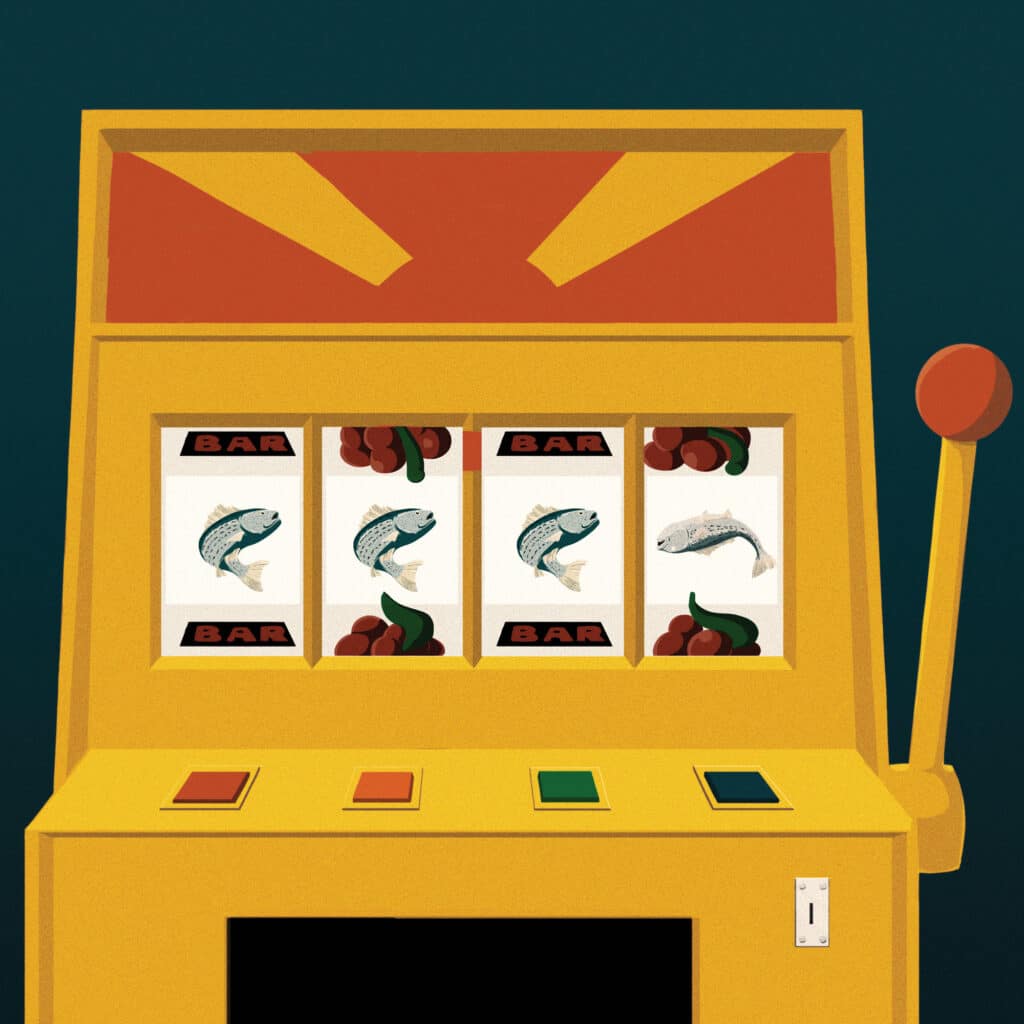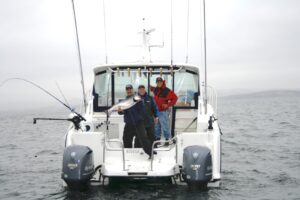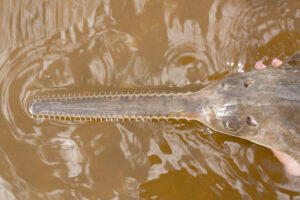
Currently, striped bass are “overfished.” That might be hard to believe if you were one of those anglers who witnessed massive aggregations of striped bass along the coast this fall, but that doesn’t make it untrue.
What overfished means in this case is that the spawning stock biomass is below a threshold used to establish whether a stock is healthy. How is that threshold determined? Well, it differs for each species. But with striped bass, it’s based on one year (1995), when the Atlantic States Marine Fisheries Commission concluded that the stock was no longer overfished after more than a decade of severe depletion. If I understand correctly, there’s no real biological justification; it’s an “empirical reference point.”
According to the commission’s management plan, if the striped bass stock becomes overfished, it has to be rebuilt to a target spawning stock biomass within 10 years of such a finding, which is 2029 in this case. The target is set considerably higher than the threshold (125 percent of it, to be exact) to account for both management and scientific uncertainty.
It’s important to point out that striped bass reference points were adjusted in 2018 after a data recalibration, resulting in a biomass target considerably higher than it had been. In the existing 40-year time series, it looks like we’ve achieved the current target level in only five of those years. I’m not in a position to say whether the biomass target is too high; after all, the science is the science. But I will say it is not a level that’s going to be easy to get to.
To get us to that target, there have been two major management actions in the last several years. A 28- to 35-inch slot limit was put in place in 2020. For the first year, it appeared to be working well, and the data indicated that we were on track to rebuild by 2029. But by 2022, fishing effort skyrocketed. And so the commission implemented emergency regulations in the middle of the 2023 season, putting in place a 28- to 31-inch slot limit. According to the latest stock-assessment update, that should get us to the rebuilding target by 2029 if effort doesn’t continue to increase.
Here’s the rub, though: Fishing effort sure seems to be increasing, regardless of a constraining slot limit. With any effort increase, along with constraining regulations, discard mortality (those fish that get thrown back dead) will increase. Some anglers tend to think that discards aren’t really a big deal. Well, they are, accounting for around 50 percent of all fishing mortality.
What worries me is what managers are likely to do about this. We’re already at a 3-inch keeper allowance. I’m not sure how much further we can go with size and bag limits. So, it seems like a real possibility that effort controls (closures) are coming down the line.
Closures seem counterintuitive given the amount of fish that are around. But closures might come because there are a lot of fish around, not in spite of it. Again, availability seems to drive effort, and more effort often equals overfishing. Should we find we’re overfishing again, managers will likely first try and control fishing effort with no-harvest closures.
The way some folks see it, it’s not fair or equitable to make those who want to take home a fish shoulder the entire management burden while what are perceived as “elitist” catch-and-release anglers continue to “waste” fish. Thus, there’s been quite a bit of discussion at the management table about “no-target closures.”
The Problem With No-Target Closures
For one, they just won’t work the way supporters think. Law enforcement reps have been clear about the enforcement and compliance issues no-target closures pose. If questioned by LE personnel, all an angler would have to say is that they are targeting a different species, even though there’s clearly no such species around. Some managers will argue that the great majority of people will be compliant, just because it’s the law. But if you look at striped bass circle-hook requirements, it’s clear how regulations that are difficult to enforce work out in the real world. I can tell you firsthand that the great majority of the fleet fishing menhaden schools is indeed using “snag-and-drop” tactics with weighted trebles. In short, if there are a lot of fish around, anglers are going to get after them. It won’t matter if they can keep one or not, or whether they are supposed to be targeting them.
Here’s who closures will punish, though: guys like me, who built businesses around catch-and-release fishing. I certainly can’t market striped bass trips on social media when there’s a no-target closure in place. And a guy like me definitely can’t say with a straight face that I’m out there in Jamaica Bay in April targeting bluefish because I should and do know better. While the average angler might get away with that, I can’t. Nor would I even try.
Read Next: Emergency Striped Bass Regulations Enacted
Because, as foolish as it may sound, I’ve always believed in the system. While some might call it overly cautious, it does seem to ensure there are fish in the water for us to target. And that is way more important, to me anyway, than fish that can be extracted.
I guess it all comes down to how far we might be willing to go to “save” striped bass. There are still folks, mostly the ones who rarely fish, who believe that the species is on a precipitous downward spiral. Well, let’s be clear: They are not.
What we’re doing right now is simply trying to get striped bass to a level that’s historically high. Is reaching a level of abundance in five years worth just not fishing for them during certain times of the season or, worse case, at all until we get there?









